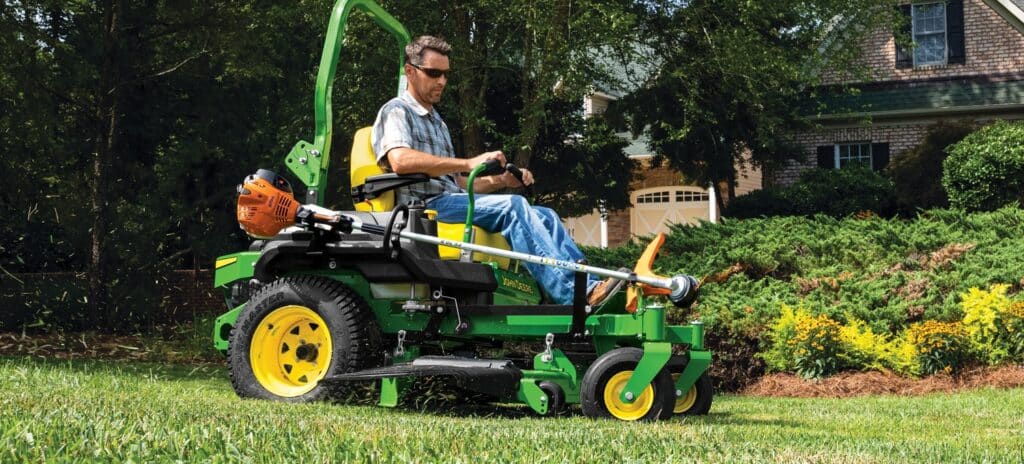
When investing in a lawnmower, it’s important to select a model that fits your land and lifestyle. You may already have a zero-turn mower or a riding lawn mower in your house and are looking to switch styles, or you might be upgrading from a walk-behind. Wherever you are coming from, zero-turn mowers and riding lawn mowers have different strengths, and it’s important to educate yourself on what’s best for your lawn before buying. Minnesota Equipment takes a look at the pros and cons of each, and some things to consider.
Traversing Terrain
Buying a mower that compliments your yard should be first and foremost on your mind. Recognizing obstacles is important for both the operator and the machine.
- Hilly Terrain: If you have a fairly hilly yard, with steep diagonals and having to climb and descend hills, a riding mower like the X394 from John Deere is the best option. Riding mowers tend to have a lower center of gravity, and the larger wheels prevent slipping in steep conditions. This doesn’t mean that a zero-turn won’t work in your yard, just that the riding lawn mower is better suited.
- Flat Terrain: With a flat yard, your decision is more about personal preference. Both zero-turn and riding lawn mowers will perform excellently in flat conditions. However, zero-turn mowers tend to move faster than riding lawn mowers.
- Heavily Landscaped/Obstacles: This is where zero-turn mowers, like the Toro TimeCutter MX5075, excel. When your yard has many obstacles, it’s difficult to navigate on a riding lawn mower. Plus, if you miss areas you need to go back and trim. The precision of zero-turn lawn mowers can help you get right up to the obstacles. This means less cleanup, saving you time.
Mower of All Trades
If you are looking for equipment that you can use in many different situations, the riding lawn mower has the edge. While zero-turns are efficient and do what they are meant to do well, the plethora of attachments and uses for riding lawn mowers makes them a great utility machine. For example, the John Deere X570 riding lawn mower can attach a snow blower or snow blade for winter snow removal, so you can use it all winter long.
Maintaining Your Machine
Between the oil filters, belts, and sharpening the blades, the cost of maintaining a zero-turn mower versus a riding mower is a toss-up. If you are misusing your machine, then costs will go up, but with proper use and maintenance, both should come out relatively similar. To learn about proper lawnmower maintenance check out our Knowledge Center.
Time In The Saddle
Nobody wants to be stuck in the hot sun for hours, so the speed is always a big deciding factor between styles. Zero-turn mowers win this category, hands-down. Most zero-turns can be operated at a faster speed than riding lawn mowers. Additionally, zero-turns have more precision around obstacles, saving you extra passes and time. Don’t push the zero-turn on too steep of terrain, though, or you will end up losing the time that you saved with the speed.
Consult The Experts
At Minnesota Equipment, we have expert technicians that know each zero-turn and riding mower from bolts to blades. We can help you choose which mower is right for you. And, we can advise how to take care of it so it lasts season after season. Find a Minnesota Equipment location near you on our website to get started: www.minnesotaequipment.com.


 MyME
MyME



